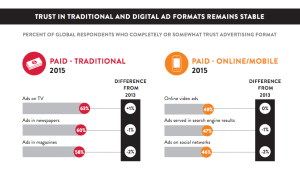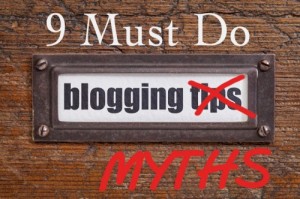It’s back-to-school shopping time again, and younger Millennials and Generation Z—and their wealthier parents—are currently stocking up on the latest gear from their favorite brick-and-mortar and digital stores. But for the retailers hoping to profit from this busy sales season, closing those sales can prove challenging, especially online.
Sales, Interrupted
While typical in-store sales conversions tend to hang around 30%, some research suggests that only 3% of online shoppers actually complete a purchase. The scourge of abandoned carts continues to plague the ecommerce industry, spanning both desktop and mobile platforms.
What can a concerned online shopkeeper do?
A whole lot, it turns out—from following up with an email reminder to reaching out to customers directly on social media (carefully, though, for reasons I’ll explain below). Yet most retailers aren’t doing nearly enough.
Abandoned Customers
A recent study conducted by Genesys of 75 of the top online or hybrid retailers in North America found that:

- Only 8% of retailers proactively offered a click-to-chat box on their site
- Only one retailer reached out as the customer was leaving the website with an “Are you sure?” message
- Only 23% followed up within 24 hours, all with an email
- 73% failed to contact the customer in any way after the cart was abandoned, even after one week

- 100% failed to recognize, even after the customer created an account with name and email, that the customer had been on the site at all when the customer called the contact center a few days later
- 81% of the retailers had no visibility into the abandoned shopping cart when the customer asked the call center agent questions about items in the cart
Customer service agents and software can be the last line of defense when it comes to abandoned carts, if used effectively. So why are so many retailers still ignoring the opportunity to leverage the personnel and tools they have to reduce the amount of money left on the table? And how could they do things differently?
Here are just a few of the things that online retailers could be doing better to save more than a few sales:
1. Send a Follow-Up Email
One of the best ways to turn an abandoned shopping cart into a completed transaction is to follow up as soon as possible by email, which customer experience experts like Amazon do well. This kind of outbound engagement is not only smart marketing; it also creates a better customer experience. After all, your online shopper has already shown you exactly what they want—make, model, color, and size—and may now just need some additional assistance from your company to help them make their decision. But if you do send your customers emails to remind them of items left in their carts, be careful not to mask your true intentions behind a thank-you note. A Genesys survey of over 1,000 consumers found that the majority consensus (42%) held that companies that send emails thanking customers for merely visiting a site is “very annoying.” Instead, be honest and direct: simply ask customers if they forgot to complete their purchase, and give them a hyperlink to lure them back to their cart.
2. Reach Out and Tweet Someone
Customers usually abandon a cart because they’re indecisive and lacking information. If your contact center tools offer sufficient insight and tracking, you can try reaching out to customers directly via social media after they abandon a cart, offering to help resolve any concerns. But be careful who you engage on Twitter or reply to on Facebook. The aforementioned Genesys survey found that consumers aged 18-34 and 35-44 had neutral feelings about being contacted directly by brands on social media, but older folks can’t stand it. So feel free to help those Gen-Z and Millennial shoppers complete that purchase of a new backpack, sneakers, or tablet computer for school—but beware when contacting their parents. Unless, that is, they’re Gen-X parents of Gen-Z kids. They probably won’t mind.
3. This Above All Else: Be Proactive
You know those little live-chat pop-up prompts you sometimes see on a website, usually featuring a nice, smiling stock photo of a customer service representative ready to assist you? Perhaps triggered when you sat idly on a page for too long, confused and indecisive about whether to treat yourself to a new iPhone or Samsung Galaxy before beginning your senior year at college? Well, those chat prompts actually work—increasing conversion rates by up to 350%.

Proactively communicating with a prospective customer via chat (or even over live video, if you have the right tech) is a surefire way to resolve a customer’s questions, establish trust and rapport, and issue a preemptive strike against the possibility of an incomplete transaction. Augmenting your site with a live remote sales agent creates a level of interactivity that’s as close to a brick-and-mortar shopping experience as a customer can get. And amid the vast array of choices available to a customer during the back-to-school shopping season, it’ll help ensure that your company beats a competitors’ chances to gain that customer’s sale. Studies have long shown that 35% to 50% of all sales go to the company who engages a customer first.

Pierce the Veil
Of course, there are plenty of other things that can be done to transform abandoned carts into real purchases—and prevent interrupted transactions in the first place—but the steps above are among the easiest ways to do so without invoking big-data analytics and major website and mobile app redesigns. And it all starts with arming your contact center with newer multimodal and omnichannel software. Traditional CRM systems may provide insight into archives of completed transactions, but that historical perspective tends to completely overlook the transactions that never were. Omnichannel tools can pierce the veil of online transactions, see into abandoned carts, and help an agent or automated system reach out to customers in real time—when it counts.
Remember, online shoppers will occasionally use their shopping cart as a wish list, but a majority of customers who abandon their cart do so with a clear intention to buy. And when it comes to back-to-school sales, it’s clear that customers need what they’re shopping for pretty quickly. Smart, educated retailers will proactively turn those intentions into successful transactions before someone else beats them to it.
Digital & Social Articles on Business 2 Community(201)







